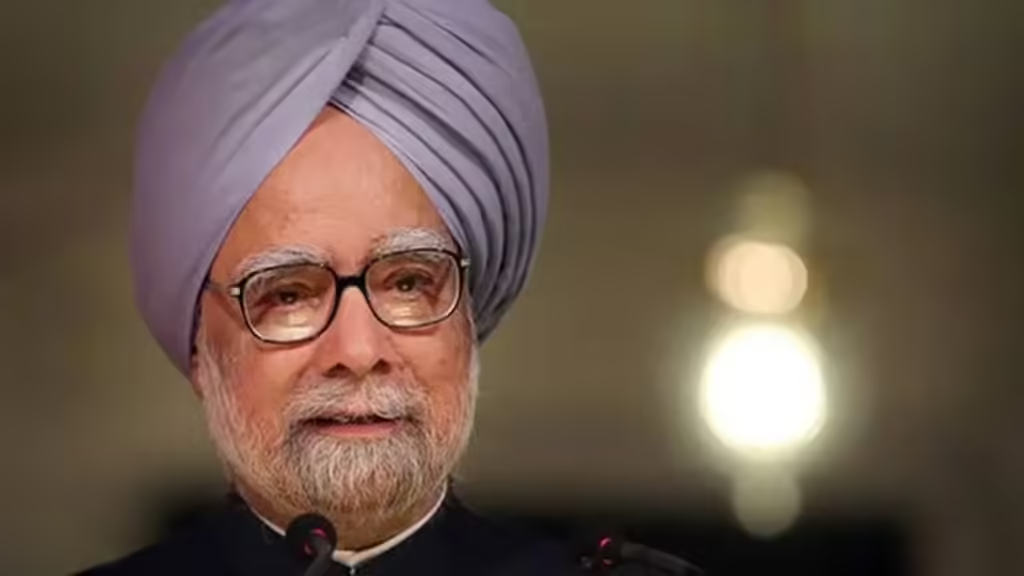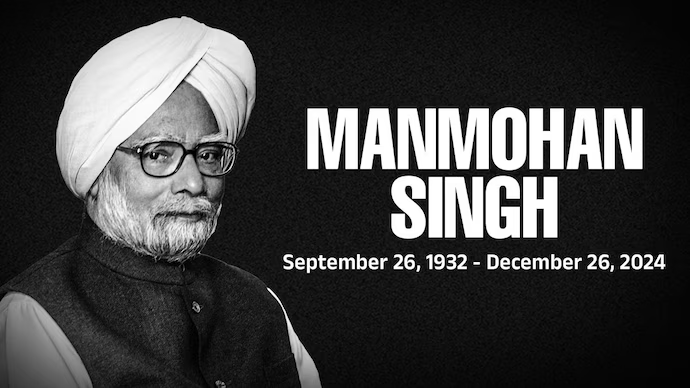Manmohan Singh Death: Former PM Manmohan Singh died on Thursday (26 December) at the age of 92. There is a wave of mourning in the country due to the death of former PM Manmohan Singh. From the President, Vice President and Prime Minister to many big leaders and personalities of the country have expressed grief over the death of Manmohan Singh. He was brought to the All India Institute of Medical Sciences (AIIMS) in Delhi on Thursday at 8:06 pm. He had fainted at home. According to the hospital bulletin, he was admitted to the emergency ward, where he breathed his last at 9:51 pm.
Rahul Gandhi and party president Mallikarjun Kharge have left for Delhi from Belgaum. They will reach Delhi late at night. On the demise of Manmohan Singh, Rahul wrote – I have lost my guide and guru. Manmohan Singh was the Prime Minister of the country twice. He was suffering from health problems for a long time. He was hospitalized several times before this as well.
Table of Contents
Meanwhile, the ongoing Congress Working Committee (CWC) meeting in Belgaum, Karnataka has been cancelled.

Key Achievements And Milestones From Manmohan Singh’s Life
- Manmohan Singh was born on September 26, 1932, in Gah, Punjab (now in Pakistan), to Gurumukh Singh and Amrit Kaur.
- Post-partition, his family migrated to India. He pursued his postgraduate studies in economics from Punjab University, completed a Ph.D. from Cambridge University, and earned a D.Phil. from Oxford University.
- He taught at Punjab University and the Delhi School of Economics. Between 1966–1969, he served as an Economic Advisor at the United Nations.
- In 1971, he joined the Ministry of Commerce and Industry as an Economic Advisor and was later promoted to Chief Economic Advisor in 1972.
- He served as Deputy Chairman of the Planning Commission and held significant roles, including RBI Governor (1982–1985), Economic Advisor to the Prime Minister, and UGC Chairman.
- Singh was elected to the Rajya Sabha from Assam in 1991, with subsequent re-elections in 1995, 2001, 2007, and 2013.
- He played key roles as Finance Minister during Narasimha Rao’s government (1991–1996), earning praise for economic reforms. He later served as Prime Minister from 2004 to 2014.
- His family includes his wife, Gursharan Kaur, and three daughters.
Manmohan Singh was the last PM to hold a press conference

On 3 January 2014, Manmohan Singh held his last press conference as PM. In this, he answered 62 questions from more than 100 journalists. In this, Manmohan Singh said, “I sincerely believe that history will be more generous towards me than the contemporary media.”
Manmohan Singh Death: Rahul Gandhi wrote- I have lost my Guru
Political and economic contribution of Dr. Singh
As Finance Minister during the economic crisis of 1991, Dr. Singh led the country on the path of liberalization and gave it a new identity on the global stage. The reforms and policies initiated during his tenure provided a strong foundation to the Indian economy. Many leaders including the Prime Minister and the President expressed grief over his demise. Tributes are being paid to him across the country remembering his contribution.
Manmohan Singh Death: Leaders Expressed Grief
Rajnath Singh said- his contribution in the progress of the country will be remembered
Congress President Kharge wrote- History will remember your humility
Amit Shah wrote- Manmohan Singh played an important role in the governance of the country
PM Modi said- Manmohan Singh made efforts to improve the lives of people
PM Modi wrote on X- India is mourning the death of Dr. Manmohan Singh ji, one of its most distinguished leaders. Rising from a humble background, he became a distinguished economist. He held many positions including Finance Minister. He left a deep mark on our economic policy for years. His contribution inside Parliament is very important. As our Prime Minister, he made extensive efforts to improve the lives of the people.
In another post, the PM has written- ‘When Dr. Manmohan Singh was the Prime Minister and I was the Chief Minister of Gujarat, we used to talk daily. We used to have deep discussions on various issues related to governance. His intelligence and humility were always visible. In this hour of grief, my condolences are with the family of Dr. Manmohan Singh, his friends and countless fans. Om Shanti’

Manmohan Singh Death: 6 Contributions That India Will Always Be Grateful For
Former Prime Minister Dr. Manmohan Singh is known for his economic reformist thinking and welfare policies. Under his leadership, the country adopted many laws and policies that improved the lives of millions of citizens. Let us know about some of the historic changes made during his tenure.
1- Right to Education Act (2009)
Dr. Singh’s government gave the right to free and compulsory education to every child between 6 and 14 years of age. This law proved to be a milestone in providing children their fundamental rights.
2- Right to Information (2005)
This law gave every Indian citizen the right to access government information, thereby ensuring transparency and accountability.
3- National Food Security Act (2013)
Through this Act, food items were made available to two-thirds of the families in the country at affordable rates. This step proved to be a boon for families living below the poverty line.
4- The Land Acquisition Act (2013)
ensured fair compensation to affected people when land is acquired for development projects.
5- The Forest Rights Act (2006)
was a historic step towards restoring the tribal communities’ traditional land rights.
6- MNREGA (2005)
Dr Singh’s government implemented the Mahatma Gandhi National Rural Employment Guarantee Act, which gave every rural household the right to 100 days of employment a year.
Also read:

